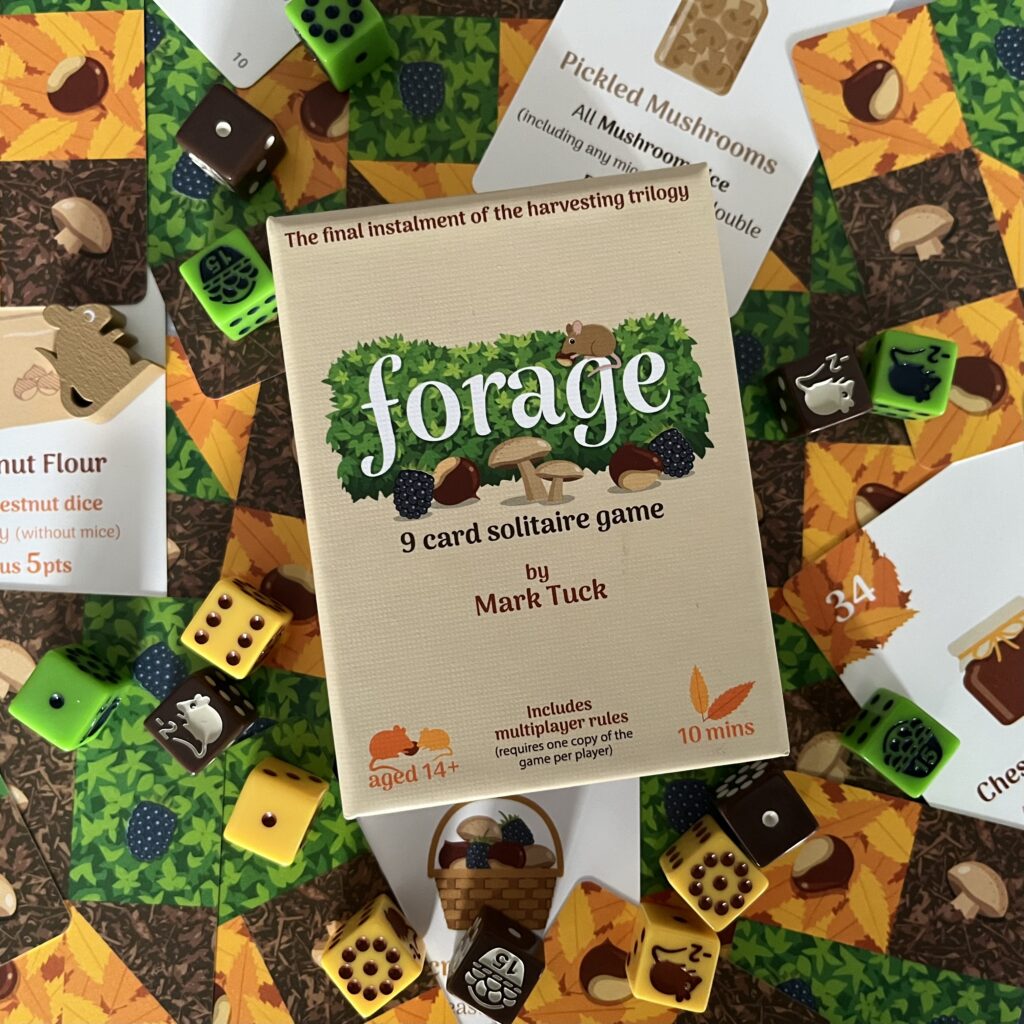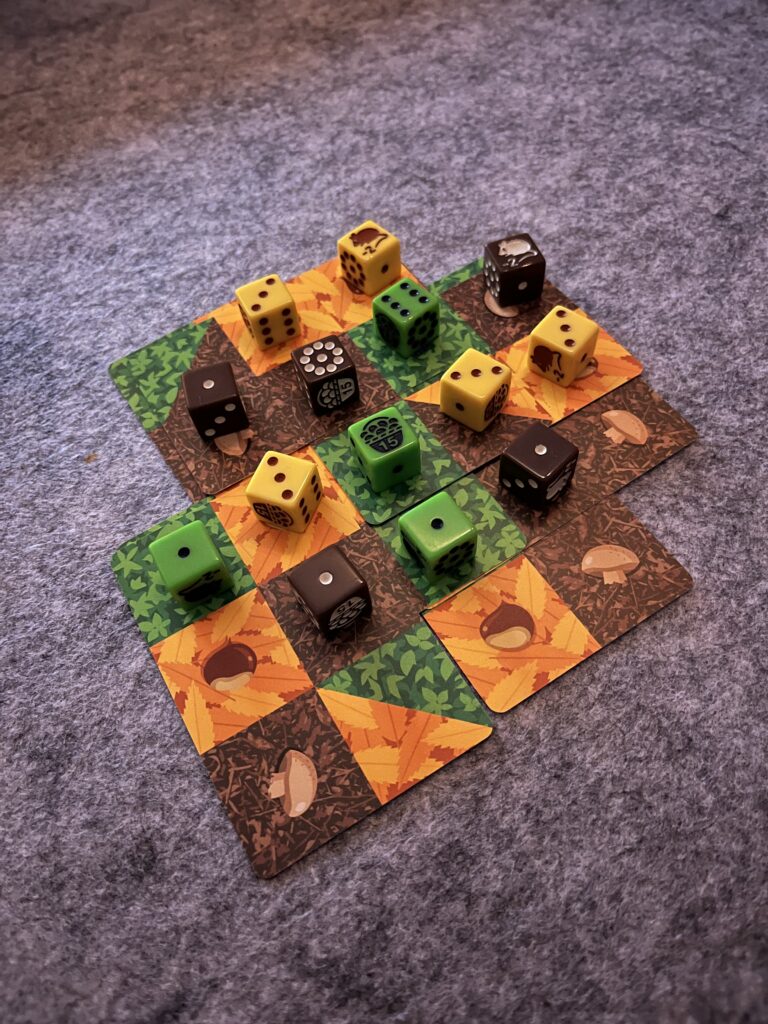In the beginning, we grew fruit in our orchard in Orchard, picked fruit in the forest in Grove and in this third part of the brilliant series of solo games, where you get to puzzle away with nine cards, we go forage gathering and picking in Forage.
Forage is the third part in the trilogy of solitaire games devised by Mark Tuck and published by Side Room Games. Once again we are going to puzzle with 9 cards (of high-quality water-repellent quality) – just like in Orchard and Grove. We are going to overlap the 9 cards to then place and multiply dice for the most points. You put the remaining 9 cards that are in the deck aside to play a second game right away! Or you use the remaining cards to play the game variant, where you score points based on 2 recipes. In fact, each of the cards is double-sided and contains on the back of the card a recipe with conditions for scoring.

So at the beginning of Forage, you take 9 cards to form a deck. Place one card face up on a table and take two cards in hand. Then you place one of the two cards from your hand each time and place this card overlapping at least one plane a previously placed card. After this you draw a new card and continue until all your cards have been played.
So cards must overlap, but by overlapping the correct squares you may place dice. In fact, on some squares there are mushrooms, chestnuts or blueberries. All the goodies you can glean in the forest! Fortunately, these mushrooms are not poisonous but will hopefully earn you points. Every time your surfaces overlap with a piece of food you may place the die or increase the value of a previously placed die. Just make sure you always overlap the correct squares, because a mistake requires you to place a mouse, which also costs you a die, and the amount of dice are limited…. You can choose to place Edwood Mouse instead of placing a mouse die, but it is even fewer points. Another disadvantage: you may not overlap mice with other cards….

At the end of the game, that is, after placing 9 cards, you add up the values of the dice and calculate the points. If you play with the recipes, you have to achieve a specific value, but you get bonuses for completing the recipes. Like its predecessors, Forage is a wonderfully smooth and solitary game that you will enjoy playing several games in a row.
The smooth game is short, but extremely satisfying if you manage to achieve a high score. Forage also contains another fun twist compared to the previous parts due to the surfaces that count as two colors, the mouse dice sides and Edwood Mouse. The recipes also contain fun new challenges. All three games have a compact box making it the ideal game for travel as well. Boring train ride and already finished your book? No problem at all! Got all three volumes? There is a nice collector’s box available to keep your games in.



